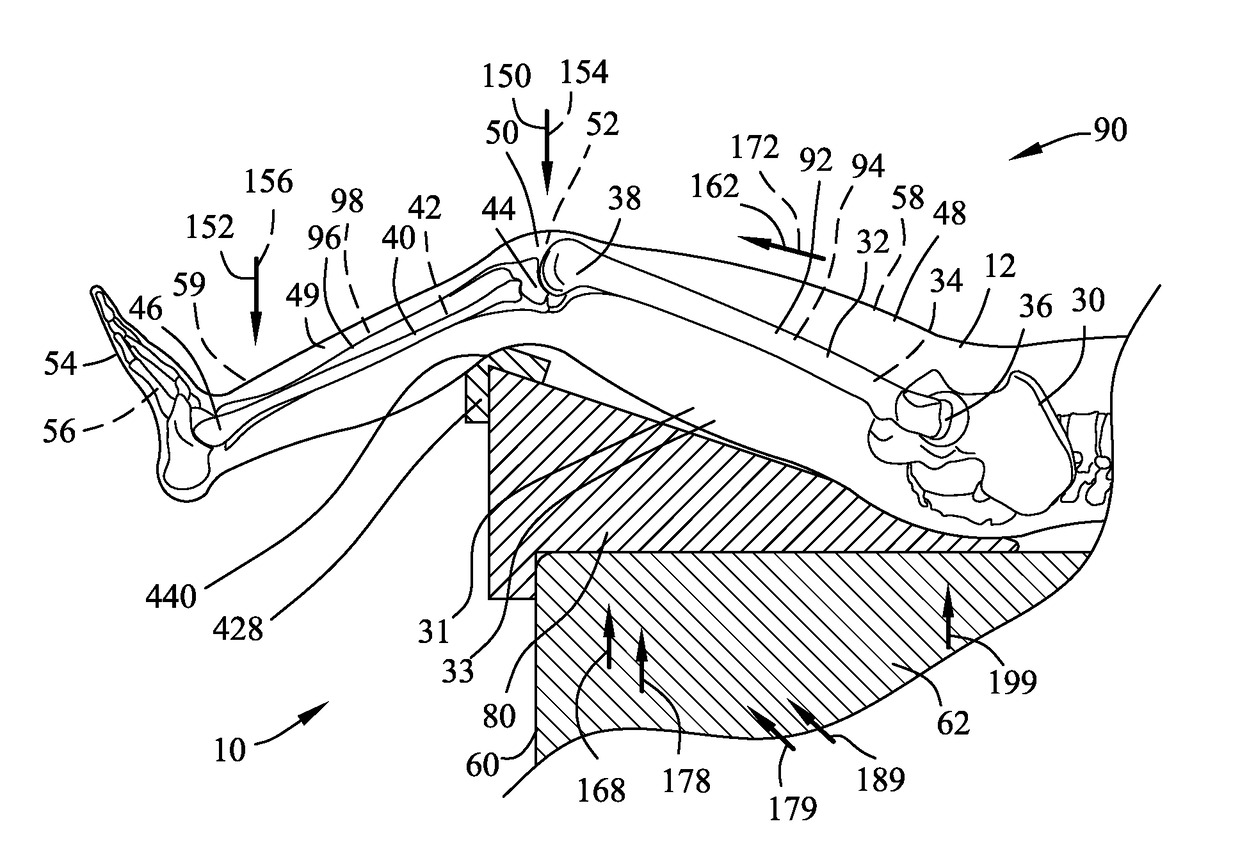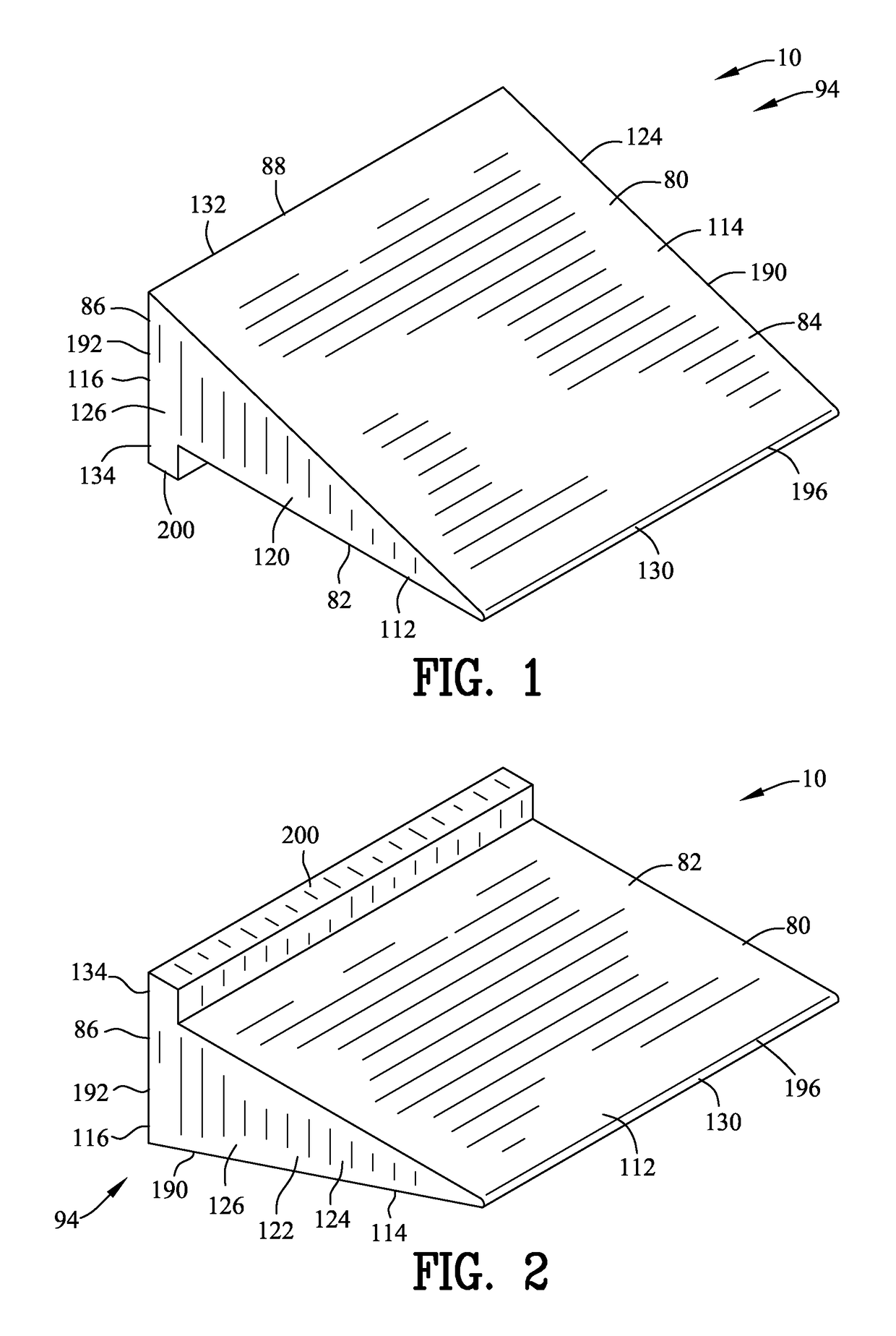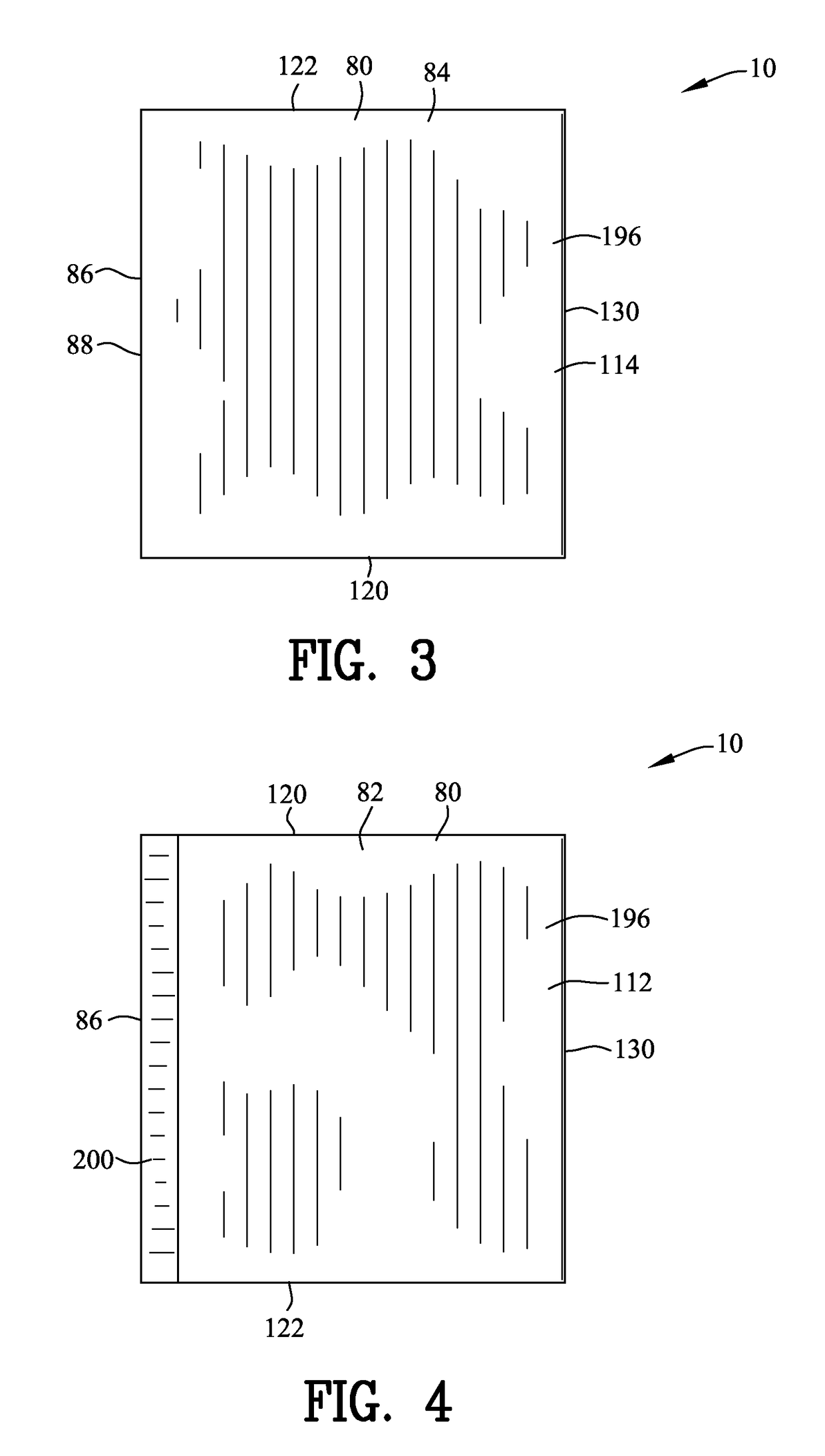Vertebral column traction device and method
- Summary
- Abstract
- Description
- Claims
- Application Information
AI Technical Summary
Benefits of technology
Problems solved by technology
Method used
Image
Examples
Embodiment Construction
[0100]Description of Anatomy
[0101]FIGS. 1-8, 11, 13-15 and 17 are various views of a vertebral column traction device 10 for expanding the vertebral column 20 of an individual 12. The vertebral column traction device 10 also releases pressure between the vertebral column 20 of an individual 12. As best shown in FIGS. 9-12 and 15-18, the vertebral column 20 extends between an upper column end 22 and a lower column end 24. The vertebral column 20 includes a plurality of vertebrae 26 separated and kept apart by a plurality of intervertebral discs 28. Each of the plurality of vertebrae 26 include a foramen transversium 13. The foramen 13 are the areas or spaces or “openings” between the vertebrae 26 where nerves 14 exit the spinal canal 16 and run down to the legs 31 and 33, in the case of the lumbar spine 17.
[0102]A pelvis 30 is coupled to the lower column end 24 of the vertebral column 20. A first leg 31 and a second leg 32 include a first femur 32 and a second femur 34 extend between...
PUM
 Login to View More
Login to View More Abstract
Description
Claims
Application Information
 Login to View More
Login to View More - R&D
- Intellectual Property
- Life Sciences
- Materials
- Tech Scout
- Unparalleled Data Quality
- Higher Quality Content
- 60% Fewer Hallucinations
Browse by: Latest US Patents, China's latest patents, Technical Efficacy Thesaurus, Application Domain, Technology Topic, Popular Technical Reports.
© 2025 PatSnap. All rights reserved.Legal|Privacy policy|Modern Slavery Act Transparency Statement|Sitemap|About US| Contact US: help@patsnap.com



